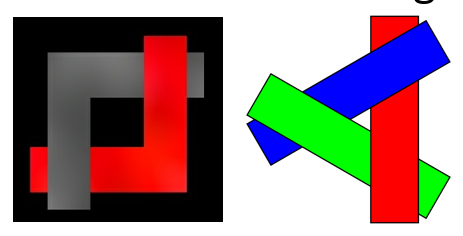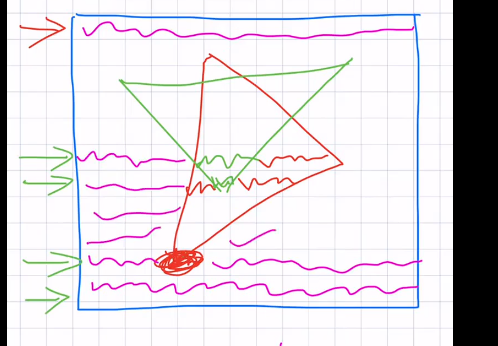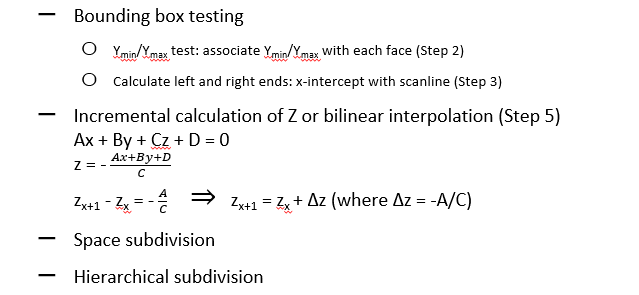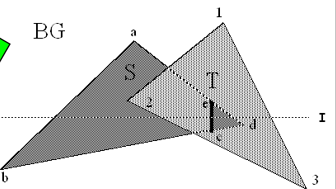10 - Hidden Surface Removal
ucla | CS 174A | 2024-03-18 20:56
Table of Contents
- Determine which objects are in front/behind and decide what to display
- order front to back (priority list) and prioritize those in front and ensure those are not transparent/translucent
Backface Culling/Removal
- for a 3d object, depending on orientation, roughly half of the objects faces (if they are simple polyhedrons) the camera (front faces) while the others don’t and are hidden (back faces)
- Given
- N = outward normal vector of a face
- P = point on the face
- E = eye vector = Eye - P
- The face is a front face depends on space iff.:
- object space algo
- sort all polygons by z-depth (front to back, FTB) from distance to the eye/cam
- scan convert polygons BTF => paint from back most poly to front most
Limitations
- cyclic polygons
- when the polygon is not completely sortable:

- when the polygon is not completely sortable:
- intersecting polys
- split polys into linearly z-separable then run Painter’s
Z-Buffer
- a screen space algo (2d projections of 3d objections onto the screen/viewport from WTV)
- create 2 buffers:
- for each pixel covered by a poly
- works on screen space so simple, efficient, precise
- polys scan-converted in random order (since we dont sort)
- no problems with cyclic/intersecting polys
Limitations
- memory reqs color and depth for entire image (Every pixel in resolution)
- aliasing issues - if a pixel is overlapped by multiple polys: what do we color or set depth, we pick one
- transparency - since we overwrite based on the polygon at the front
- time complexity - depends on polygon complexity
Scanline Z-buffer
- store 2 buffers: zb[X_res], cb[X_res]
- the scanline is the row of pixels @ x
- for each scanline, reset zb and cb
- for each poly that intersects the scanline:
- calc span - contiguous set of pixels on the scanline
- for each pixel in span:
- calc z for poly at (x,y)
- if z < zb[x]: zb[x]=z, cb[x]=color of poly
- for each poly that intersects the scanline:

Tradeoff
- same advantages as z-buffer
- less memory req than z-buffer
- BUT, regs multiple passes through database of polygons on the screen
- entire polygon is the same color
Optimality (Efficiency)
- assuming planar polys
- specifically bilinear interpolation:
- calc z of next pixel over by modifying prev z with a change in z=-A/C

